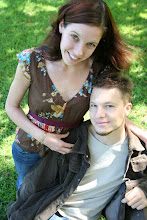Lines in the Sand
After an epic bus trip from Ecuador, to Piurna and then down the coast of Peru we finally arrived in the capital city of Lima. However, as soon as we arrived we realised that it wasn´t really worth all the effort it took to get there. There is absolutely nothing along the northern coast line... and we mean nothing. Once arriving at the outskirts we drove through slum regions for about 1.5 hours before reaching the centre of the city which is home to 7.5 million people. Apparently in the 1950`s when the rural areas of Peru initially got TV, many impoverished country folk flocked to the city in search of the lifestyle they saw for the first time on the television. As a result the slums saw an explosion of population growth. If you're heading this way, don't bother with this city!!
Homes on the outskirts of Peru's capital city of Lima
Lima itself is horrible except for a very small suburb called Miraflores where it seems the only nice houses, shops and cafes are located. Every tourist we have spoken to has left Lima as soon as possible. Despite having been driving almost continually for about 4 days and being desperate to get off the bus, we disembarked in Lima and immediately went to book a ticket for the next bus out of there the very same afternoon.
Seriously, the only reasonably nice area in Lima known as Miraflores...
.
Nazcar was our next destination. It is a dusty little town in the middle of the desert that was pretty much unknown to the world until someone flew over the sand dunes and noticed enormous markings in the sand, known now as the Nazca Lines. No one really knows why the ancient Nazca people spent so much time making markings that could only really be seen from the sky. There are countless lines across the sand as well as figures of animals and other things that were important to their culture. There are theories that the lines had astrological significance or led the way to water. Others think that they were used for religious ceremonies and worship to their God´s and as paths to sacred sites. The people made the images by removing the dark stones that cover the desert to reveal the light sand beneath. As there is so little rain and wind in the desert, the images have remained intact for centuries.
30m tall image on the side of a sand dune known as "the astronaut". Didn't anyone think about the fact that the ancient Nazcas wouldn't have any idea what an astronaut was?
.
We took a light plane ride over the lines to get the best view. Marie and Renee both were ill the whole way as the flight was almost aerobatic in nature as the pilot threw the plane around to make sure every passenger got a good view of each figure - good for the photos but not so good for the stomach! Some of the figures were huge and very easy to see whilst others were much more difficult. Apparently they are still discovering more images regularly in this vast desert.
.
Nazca Desert
No idea what this is... but thought it was funky














0 Comments:
Post a Comment
<< Home